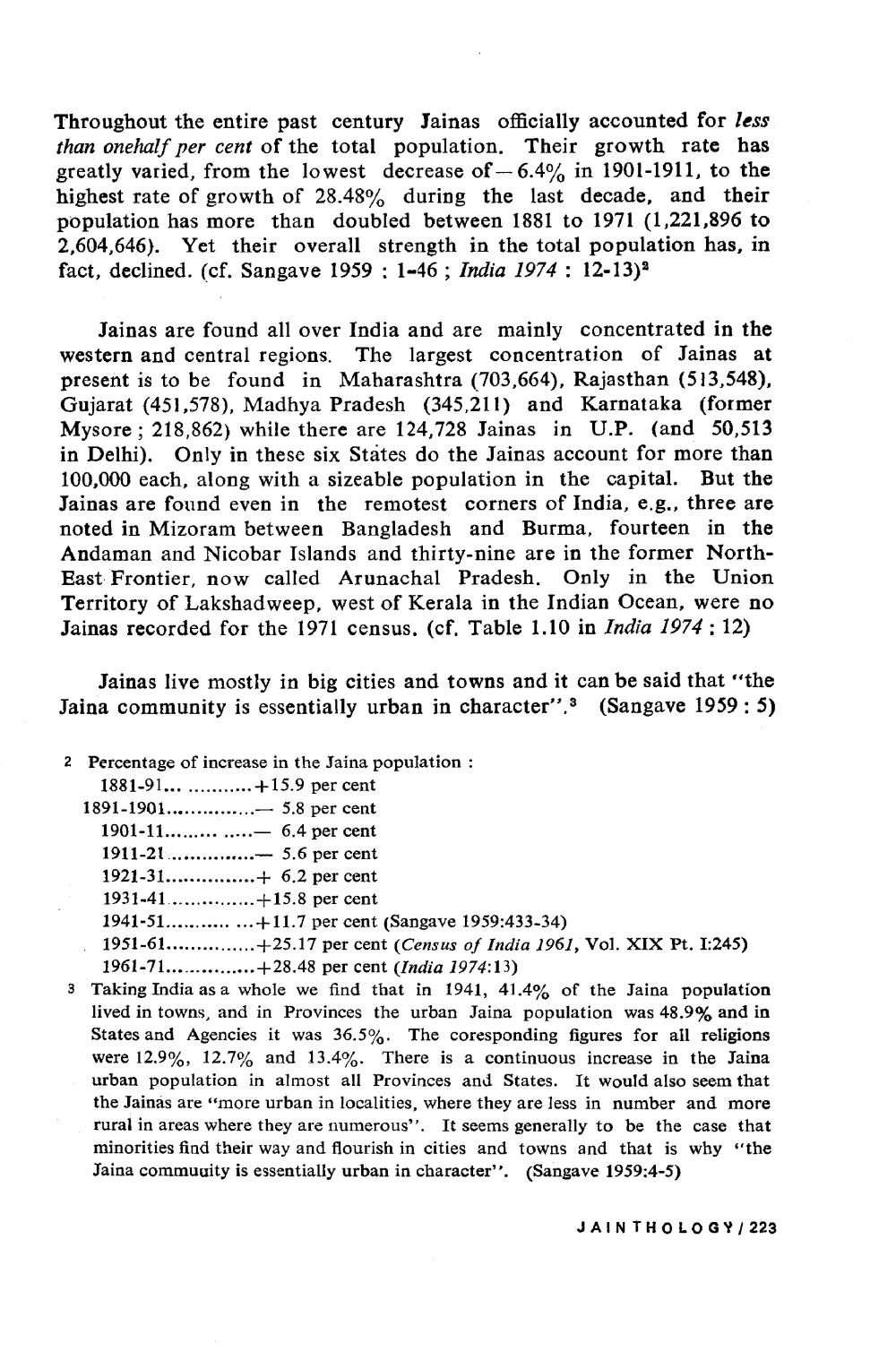________________
Throughout the entire past century Jainas officially accounted for less than onehalf per cent of the total population. Their growth rate has greatly varied, from the lowest decrease of -- 6.4% in 1901-1911, to the highest rate of growth of 28.48% during the last decade, and their population has more than doubled between 1881 to 1971 (1,221,896 to 2,604,646). Yet their overall strength in the total population has, in fact, declined. (cf. Sangave 1959 : 1-46; India 1974 : 12-13)
Jainas are found all over India and are mainly concentrated in the western and central regions. The largest concentration of Jainas at present is to be found in Maharashtra (703,664), Rajasthan (513,548), Gujarat (451,578), Madhya Pradesh (345,211) and Karnataka (former Mysore ; 218,862) while there are 124,728 Jainas in U.P. (and 50,513 in Delhi). Only in these six States do the Jainas account for more than 100,000 each, along with a sizeable population in the capital. But the Jainas are found even in the remotest corners of India, e.g., three are noted in Mizoram between Bangladesh and Burma, fourteen in the Andaman and Nicobar Islands and thirty-nine are in the former NorthEast Frontier, now called Arunachal Pradesh. Only in the Union Territory of Lakshadweep, west of Kerala in the Indian Ocean, were no Jainas recorded for the 1971 census. (cf. Table 1.10 in India 1974 : 12)
Jainas live mostly in big cities and towns and it can be said that "the Jaina community is essentially urban in character" 3 (Sangave 1959: 5)
2 Percentage of increase in the Jaina population :
1881-91.............. +15.9 per cent 1891-1901...............- 5.8 per cent
1901-11......... .....- 6.4 per cent 1911-21 ...............-- 5.6 per cent 1921-31...............+ 6.2 per cent 1931-41...............+15.8 per cent 1941-51.............. +11.7 per cent (Sangave 1959:433-34) 1951-61...............+25.17 per cent (Census of India 1961, Vol. XIX Pt. 1:245)
1961-71...............+28.48 per cent (India 1974:13) 3 Taking India as a whole we find that in 1941, 41.4% of the Jaina population
lived in towns, and in Provinces the urban Jaina population was 48.9% and in States and Agencies it was 36.5%. The coresponding figures for all religions were 12.9%, 12.7% and 13.4%. There is a continuous increase in the Jaina urban population in almost all Provinces and States. It would also seem that the Jainas are "more urban in localities, where they are less in number and more rural in areas where they are numerous''. It seems generally to be the case that minorities find their way and flourish in cities and towns and that is why "the Jaina commuuity is essentially urban in character''. (Sangave 1959:4-5)
JAINTHOLOGY/ 223




